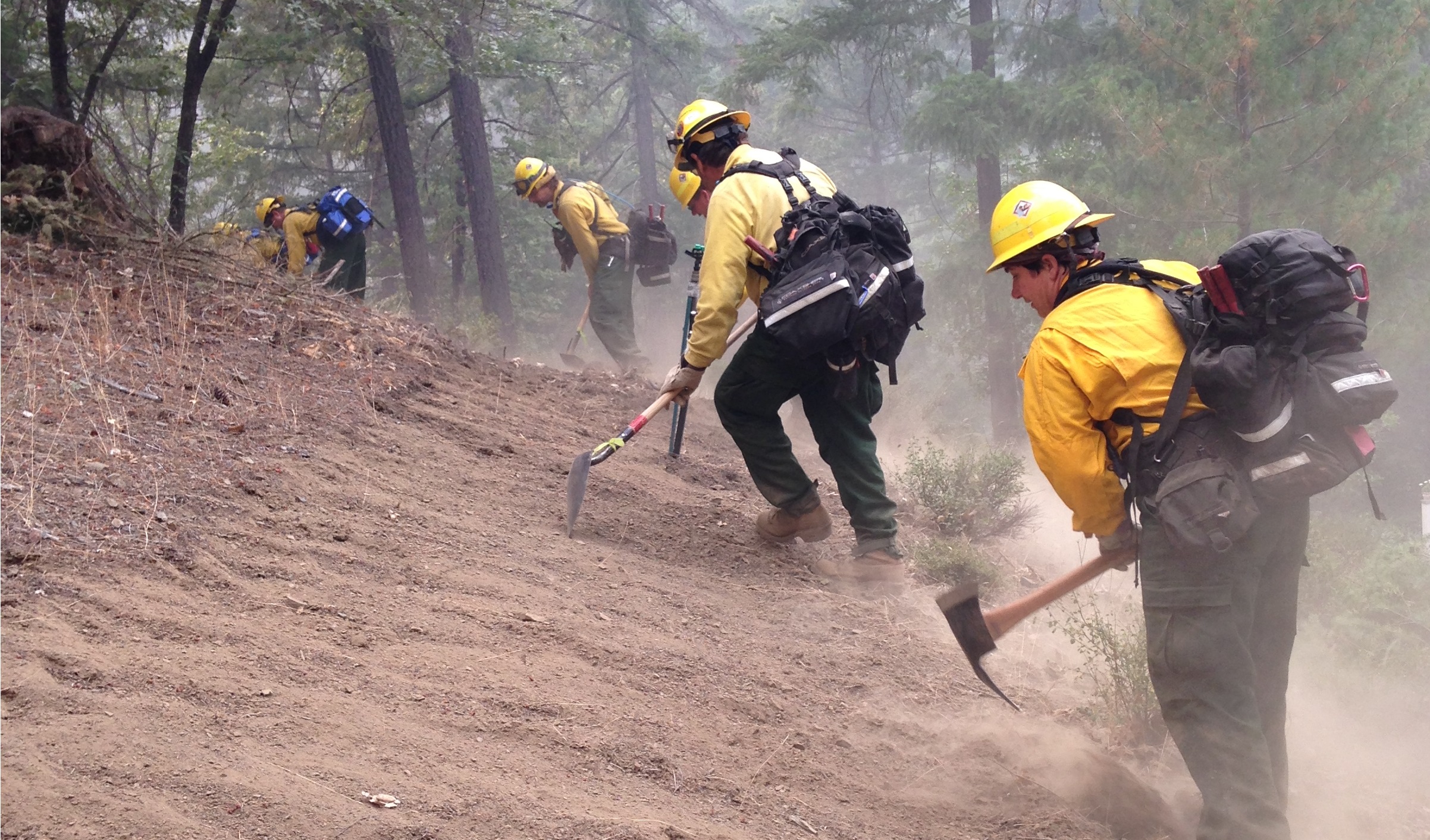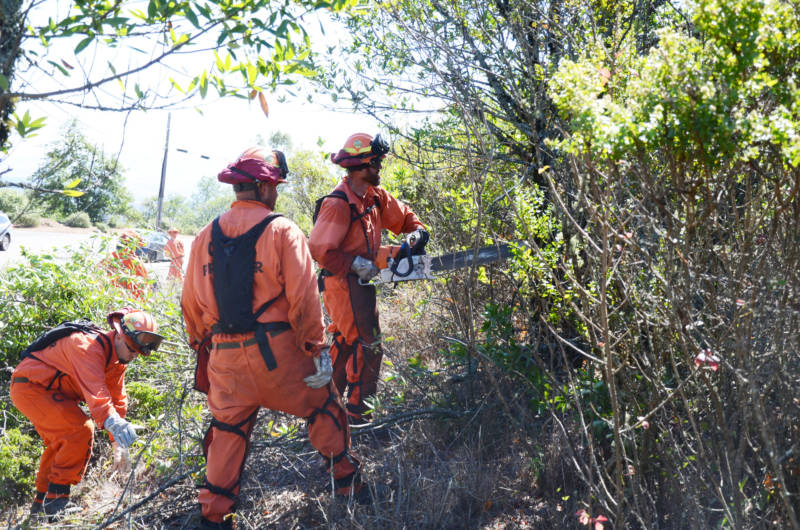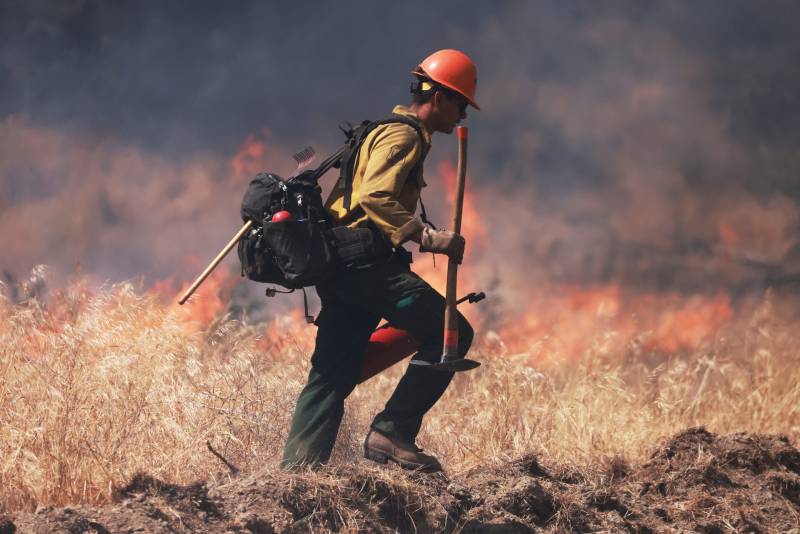Updated 10 a.m. on January 9, 2025
When a deadly wildfire breaks out in California, causing people to lose their homes, security or even their lives, it can be a truly distressing and confusing time for those of us who live here.
The Bay Curious team asked KQED audiences their most pressing questions about wildfires. Read on for the full answers.
‘What does it mean when a fire is contained or controlled?’
Once a fire starts, the goal is suppression, and the first step is containment.
Fire updates often include a “% contained” figure, and it can take days for fire crews to get even 10% containment on certain fires.
So what does containment mean, and why is it so hard to achieve?
“Containment means that there’s some type of barrier between the area that has been burned, which we call ‘the black’ and an area that has not been burned, which we refer to as ‘the green,'” Cal Fire public information officer Jaime Williams says.
The “% contained” indicates how much of the fire’s perimeter is surrounded by a barrier. So, for a fire whose perimeter is 10 miles around, if firefighters create a 5-mile-long dirt area around the fire, the fire is 50% contained.
There are two types of barriers: natural and artificial. A stream or lake can act as a natural barrier, and an artificial barrier is often a dirt path dug around the fire. Firefighters will use a bulldozer to create what is called a “dozer line” or manually carve out a path using picks and shovels, which is called a “hand line.”
“They basically scrape the top layer of the grass off to leave bare mineral soil,” Williams says. “That way, the fire stops because there’s nothing to burn.”
Or firefighters will employ a “hose lay,” where they’ll carry a synthetic hose around the fire, periodically spraying the area inside “the black.”
But that doesn’t mean fires can’t spread beyond a containment line.

Winds can carry embers beyond containment lines, which spark new fires nearby.
And then a fire can go from 50% contained to 20% contained.
Even after a fire is contained, there’s still a lot of work to do.
A contained fire can still be flaming inside the perimeter and firefighters must burn out untouched vegetation inside the barrier and cool down hot spots that could flare up. After the hot spots and unburned vegetation are treated and the barrier is expected to hold, a fire is considered “controlled.”
‘How do wildfires get their names?’
The first fire crew on the scene typically names the fire. Usually, they’re inspired by a nearby landmark like a road, mountain, lake or town.
The Tubbs Fire, which destroyed parts of Santa Rosa in 2017, started near Tubbs Lane, just north of Calistoga. The Atlas Fire in Napa was named for Atlas Peak, a nearby mountain.
But the naming process isn’t always that simple — especially with the sheer number of fires in play.
Back in 2015, firefighters in Idaho faced their 57th fire of the season and couldn’t come up with a creative name for the fire. So, they named it Not Creative Fire.
Fire names also often include the word “complex,” like the CZU Lightning Complex fires that burned in San Mateo and Santa Cruz counties in 2020. That means there are two or more individual fires located in the same general area, and it has been assigned to a unified command.
‘How can I prepare for a wildfire?’
Wildfires may now feel grimly inevitable in Northern California. But there is still a great deal you can do personally to prepare yourself, your family and your home for wildfire and its wide-reaching effects. Find our most-read guides to wildfire preparedness below:
How to Prepare Your Home For Wildfire
Even if your home isn’t in the direct path of flames, wildfire can still reach you through flying embers. Find out how to do a self-assessment of the trees, brush and other vegetation on and around your property, and learn the steps to protect your home from wildfire by creating defensible space and “hardening” your home.
What to Pack in Your Emergency Bag to Prepare For a Wildfire
Fire moves incredibly fast, and if you live in an at-risk zone, you and your family may have to leave your home immediately. Read our guide to what should be in your emergency bag.

Fire Evacuation: What Actually Happens? And How Can You Plan?
Having to evacuate your home due to the threat of wildfire is a scary prospect — especially if you’ve never had to do it before. Read our guide to safely and swiftly leaving your home, from when you should leave to what you should bring (and what you should wear).
During a Wildfire, Your Phone Might Stop Working. How Can You Communicate?
In a disaster situation, communication between you and those you care about is key. But what if the one device you rely on to communicate — your phone — isn’t working because of downed cell towers? Read these steps you can take to maintain contact with others and keep loved ones up-to-date on your safety.
